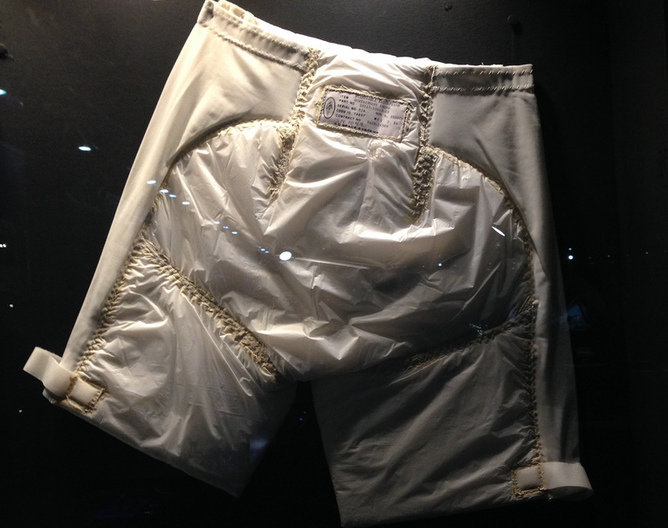
Powdered Alcohol and Space Diapers have Something in Common

This article was originally published at The Conversation. The publication contributed the article to Live Science's Expert Voices: Op-Ed & Insights.
Powdered alcohol has been in the news this week. First we were told that a product called Palcohol was the hottest new thing to hit the US market, a powder that would dissolve in water to give different types of alcoholic drinks, including rum, vodka and several cocktails.
Parts of the media went into wild speculative overdrive. Then, within days, approval for the product was withheld reportedly over labelling issues. The idea hasn’t only been mooted in the US, but also in Germany, the Netherlands and Japan.
Everyone knows that alcohol – ethanol to be precise – is a liquid at normal temperatures. It has a boiling point about 20 degrees lower than water. And alcoholic drinks, which of course are mixtures of alcohol with water, are also liquids. So how can Palcohol be a solid?
It uses the same trick that NASA used to develop Maximum Absorbency Garments for astronauts to wear during take off, to soak up immense amounts of water yet remain a solid (sometimes referred to as space diapers). The property can be called superabsorption. This is great if you are a toddler or an astronaut who is zipped up in their spacesuit with nowhere to go, so to speak. These use polymers based on sodium acrylate. The water molecules are held inside the polymer network and can’t get out, even under pressure, unlike the sponges or towels you might use to mop up water.
Powdered alcohol relies on compounds called cyclodextrins to hold the alcohol. Cyclodextrins have been around since 1891 and are made from starch. Enzymes are used to convert the starch into a cyclic molecule, made of sugar molecules linked up into rings, which is cyclodextrin.
Cyclodextrins have a cavity in the middle which can accept all sorts of molecules and is considered an inactive ingredient as you might find in tablets, which is used to carry another “active” ingredient. Commercially they have many applications, which include removing cholesterol from animal products, ferrying pharmaceuticals across biological membranes and, in the cosmetic industry, to hold on to fragrance molecules for slow, long-term, release. Cyclodextrins can also absorb molecules of ethanol (ethyl alcohol) in the same way; when liquid alcohol molecules are locked up inside a solid the result is “alcohol powder”.
Get the Space.com Newsletter
Breaking space news, the latest updates on rocket launches, skywatching events and more!
It’s reckoned that the cyclodextrins can absorb more than half their own weight in alcohol. When you add the “alcohol powder” to water, it dissolves, releasing the ethanol. These cyclodextrins are not toxic so they should be quite safe to consume as part of the drink.
The concept of powdered alcohol has been around for about 50 years. In fact an alcohol powder was first sold in Japan more than 30 years ago – but it certainly hasn’t swept the world. So why has the concept taken so long to bring to market?
Well, just think about the complexity of what you are trying to achieve. Traditional alcoholic drinks have recognisable and widely accepted flavours, so the product has to bear a close resemblance to the established product. Much of the flavour of alcoholic drinks is down to small numbers of molecules which have much stronger smells than ethanol – there are thought to be more than 30 molecules responsible for the flavour of freshly-distilled cognac and around 200 volatile flavour molecules have been detected in a sample of Jamaica rum.
The flavour character of Scotch malt whisky is enhanced by further reactions between the molecules in the spirit and the wooden cask. So whether it will be possible to capture these subtle flavours in a reconstituted drink remains to be seen. But whatever the science, it’s clear from the debate over the latest product’s approval that powdered alcohol will never be to everyone’s taste.
Simon Cotton does not work for, consult to, own shares in or receive funding from any company or organisation that would benefit from this article, and has no relevant affiliations.
This article was originally published on The Conversation. Read the original article. Follow all of the Expert Voices issues and debates — and become part of the discussion — on Facebook, Twitter and Google +. The views expressed are those of the author and do not necessarily reflect the views of the publisher. This version of the article was originally published on Live Science.
Join our Space Forums to keep talking space on the latest missions, night sky and more! And if you have a news tip, correction or comment, let us know at: community@space.com.









